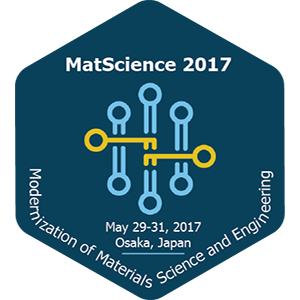
June Park
Korea Photonics Technology Institute, South Korea.
Title: Applications of chalcogenide Ge-Sb-Se glass used for the molded lens of thermal camera using far infrared
Biography
Biography: June Park
Abstract
Chalcogenide glasses including chalcogen elements sulfur, selenium and tellurium, have been studied in optics system for their unique properties including high refractive index and non-linearlity [1]. Among various chalcogenide glasses, Ge-Sb-Se glasses show a good transmittance in the NIR and midIR spectrum from 2 µm ~ 16 µm and have excellent moldability for making molded lens. In order to find optimal lens molding conditions, we investigated thermal properties of Ge-Sb-Se glasses by varying different composition ratio. All of glass samples were synthesized by using melt-quenching method in rocking furnace. The samples are categorized with two kind of chemical formula; Ge(30-x)Sb(10+x)Se60 and Ge(32.5-x)Sb10Se(57.5+x). To confirm amorphous phase of samples, X-ray diffraction measurement was performed. The thermal and thermomechanical properties of Ge-Sb-Se glass sample were investigated using differential scanning calorimetry (DSC) and thermo mechanical analyzer (TMA), respectively. According to increase of Ge element, mean coordination number (MCN) is increased as shown in Fig. 1. And, we found that the glass transition temperature (Tg) of Ge(30-x)Sb(10+x)Se60 decreased as the increase of MCN of Ge(30-x)Sb(10+x)Se60. It is concluded that the thermal behavior of Ge-Sb-Se glass system is related to the mean bond energies of the elements. Finally, we optimized molding condition of chalcogenide glass system with their thermal properties.

